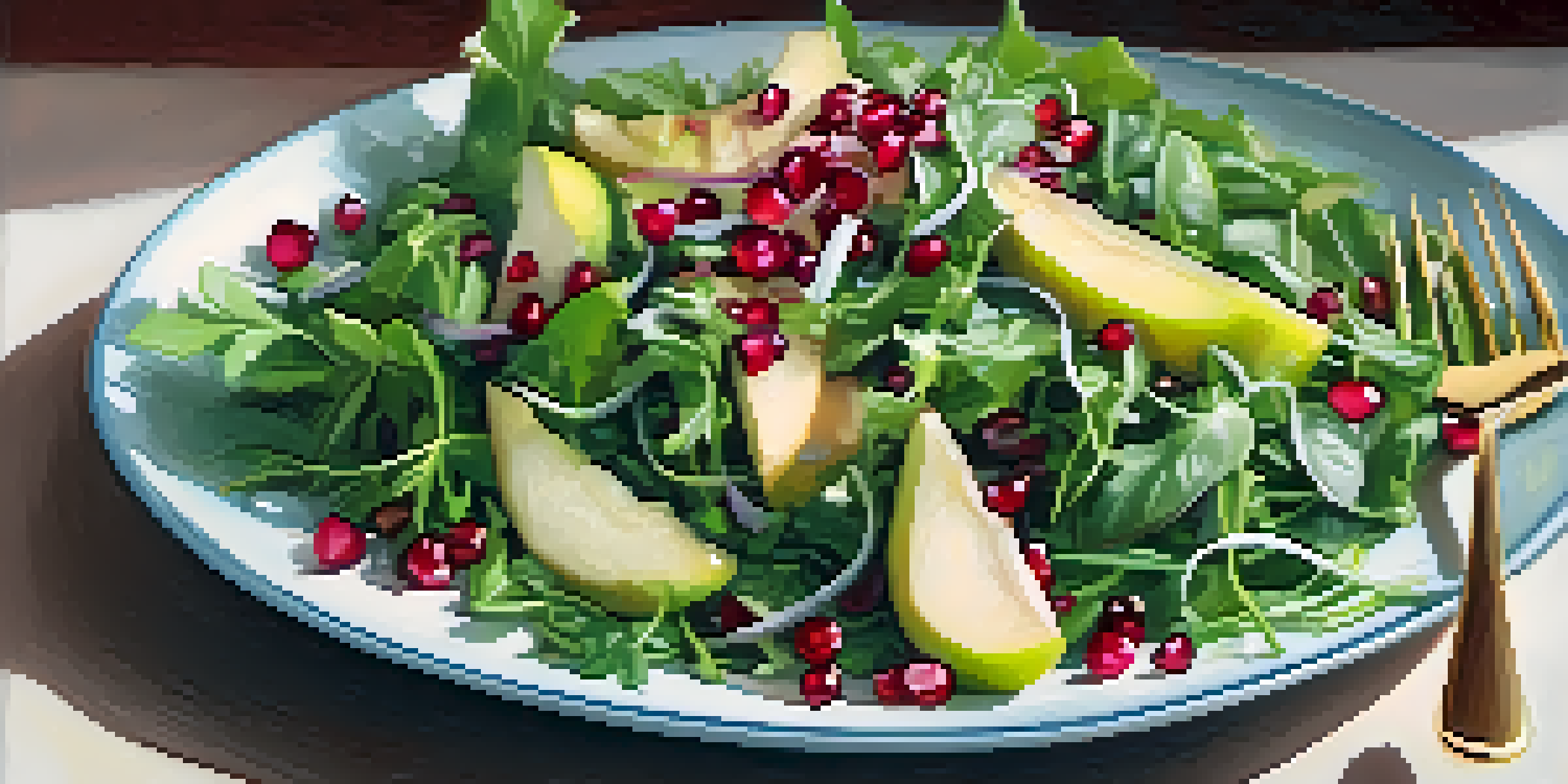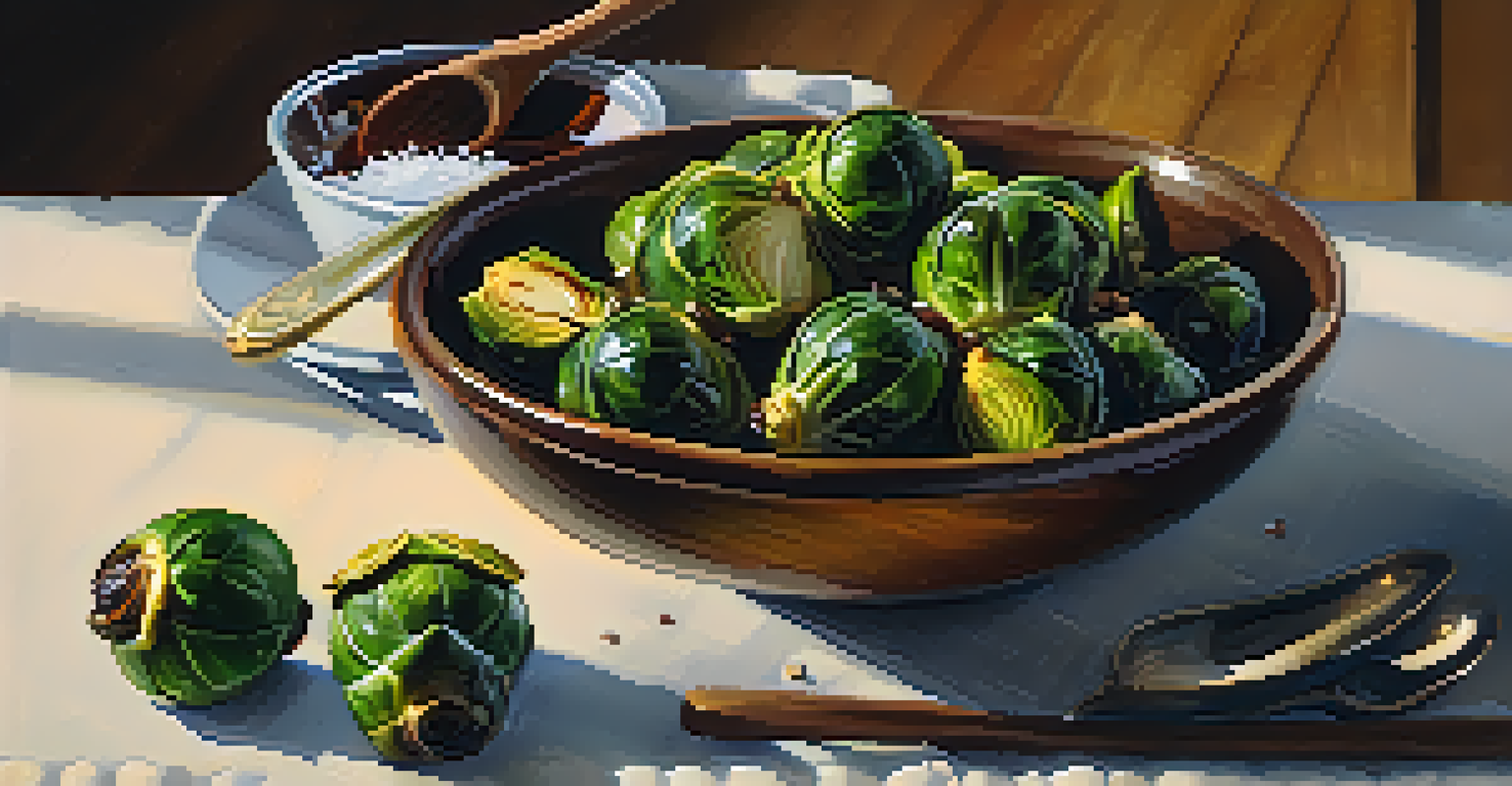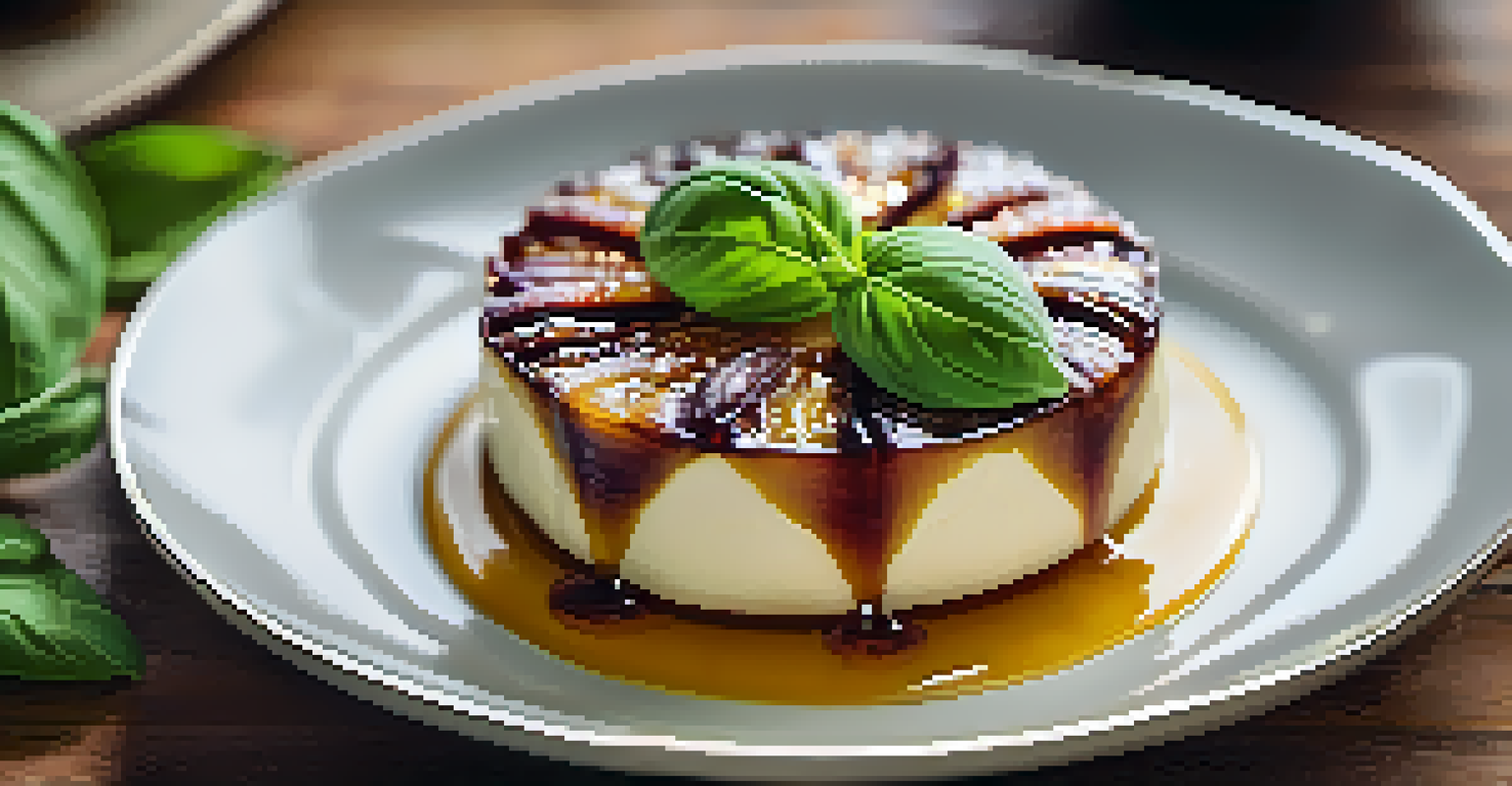Sweet and Savory: Perfect Flavor Pairings in Vegan Cuisine

The Art of Balancing Flavors in Vegan Dishes
Balancing flavors is essential in any cuisine, but it's especially crucial in vegan cooking, where ingredients can be limited. Combining sweet and savory elements creates a complex palate that excites the taste buds. Think of it like a dance, where each flavor complements the other, enhancing the overall experience of the dish.
The secret of good cooking is, first, having a love of it, and second, a good palate.
For instance, consider the classic pairing of sweet potatoes with maple syrup and a sprinkle of sea salt. The sweetness of the potato melds beautifully with the syrup, while the salt adds depth, creating a dish that's both comforting and sophisticated. This balance is what makes vegan cuisine so versatile and enjoyable.
Experimenting with flavors can be a fun journey. Try adding fruits like mango or pineapple to savory salads or curries to see how their sweetness transforms the dish. This playful approach often leads to delightful surprises that keep meals exciting and fresh.
Fruits and Vegetables: A Match Made in Heaven
Fruits and vegetables are the cornerstone of vegan cooking, and their combination can yield fantastic results. Take a classic salad, for example; adding slices of juicy pear or pomegranate seeds can elevate the dish from ordinary to extraordinary. The natural sweetness of the fruit contrasts beautifully with the earthiness of greens like kale or arugula.

Moreover, roasted vegetables paired with a sweet glaze can create a symphony of flavors. Imagine caramelized Brussels sprouts drizzled with balsamic vinegar and a touch of honey or agave. The sweetness enhances the savory notes, making each bite a delightful experience.
Balancing Sweet and Savory Flavors
Combining sweet and savory elements in vegan dishes creates a complex and enjoyable palate that enhances the overall dining experience.
Don't hesitate to explore unconventional pairings too. Carrots can be roasted with a hint of orange juice, while beets shine when paired with a sprinkle of coconut sugar. The key is to embrace the natural sweetness present in many vegetables and let it play off the savory elements.
Herbs and Spices: Elevating Sweet-Savory Combinations
Herbs and spices are the unsung heroes of many dishes, especially when it comes to sweet and savory combinations. Fresh basil, for example, can add a fresh twist to a dish that includes strawberries and balsamic vinegar. The herb's aromatic quality bridges the gap between the sweet and savory, creating a harmonious flavor profile.
Cooking is like love. It should be entered into with abandon or not at all.
Consider adding spices like cinnamon or nutmeg to savory dishes as well. These warm spices can enhance the natural sweetness of root vegetables or squash, while also providing a comforting aroma that fills the kitchen. Think of a spiced pumpkin soup that balances sweet and savory elements delightfully.
Experimenting with herbs and spices can lead to unexpected flavor discoveries. A sprinkle of dill on a sweet potato salad can introduce a refreshing contrast, inviting your palate to explore new territories. Don’t shy away from trying different combinations; you might find a new favorite!
Nuts and Seeds: Crunch Meets Sweetness
Nuts and seeds add a delightful crunch to vegan dishes, along with a unique flavor profile that can perfectly balance sweet and savory elements. Imagine sprinkling toasted walnuts over a salad with dried cranberries; the nutty flavor enhances the sweetness of the fruit, while also providing a satisfying texture.
Seeds like pumpkin or sunflower seeds can serve a similar purpose, offering both nutrition and crunch. A handful of these seeds can transform a simple dish into something extraordinary, as they contribute a savory depth that complements the sweetness of roasted vegetables or fruits.
Unique Pairings with Fruits and Veggies
The combination of fruits and vegetables can elevate dishes, introducing unexpected sweetness that complements earthy flavors.
Moreover, incorporating nut butters into sauces or dressings can create a rich, creamy texture. A peanut sauce with a touch of maple syrup can be the perfect accompaniment to a sweet-and-savory noodle dish. The interplay between flavors is what makes vegan cuisine so versatile and appealing.
Sweet and Savory Sauces: The Flavor Enhancers
Sauces can be the secret weapon in creating sweet and savory dishes that leave a lasting impression. A tangy barbecue sauce made with maple syrup and apple cider vinegar can add depth to grilled vegetables, showcasing the beauty of sweet and savory together. This combination not only enhances the flavors but also makes the dish visually appealing.
Another great example is a sweet chili sauce, which can pair wonderfully with tofu or veggies. The heat from the chili interacts beautifully with the sweetness, creating a balance that tantalizes the taste buds. This simple addition can completely transform your meal from mundane to memorable.
Don't forget to explore homemade sauces! A blend of tahini, lemon juice, and a touch of agave can create a rich dressing that complements roasted veggies or grain bowls perfectly. The beauty of crafting your own sauces is that you can adjust the sweetness and savory elements to your liking.
Grains and Legumes: A Canvas for Flavor Pairings
Grains and legumes form the backbone of many vegan meals, providing a hearty base for flavor pairings. Consider a quinoa salad tossed with roasted butternut squash and a drizzle of tahini; the nutty flavor of quinoa complements the sweetness of the squash beautifully. This combination not only offers a delightful taste but also packs a nutritional punch.
Lentils are another fantastic option, as they can absorb flavors wonderfully. A lentil dish with caramelized onions and a hint of maple syrup can create a sweet-savory experience that is both comforting and satisfying. This versatility allows for endless opportunities to play with flavors.
Herbs and Spices Enhance Dishes
Incorporating herbs and spices into vegan recipes can bridge sweet and savory flavors, leading to delightful culinary discoveries.
Feel free to experiment with different grains like farro or barley, which can add unique textures and flavors to your meals. Incorporating fruits like raisins or apricots into these dishes can introduce a touch of sweetness that pairs perfectly with savory elements, making for a well-rounded meal.
Desserts with a Savory Twist: Sweet Meets Savory
Who says desserts can't embrace savory flavors? Many vegan desserts incorporate sweet and savory elements to create a unique culinary experience. A chocolate dessert with a pinch of sea salt can enhance the sweetness while adding an unexpected twist that surprises the palate.
Consider a savory-sweet tart made with figs and goat cheese (or a vegan alternative). The rich, creamy texture of the cheese complements the sweetness of the figs, making each bite a delightful exploration of flavor. This kind of dessert can impress guests and elevate any meal.

Don’t shy away from experimenting with herbs in your desserts, either. A basil-infused sorbet can provide a refreshing contrast to a sweet base, and the combination of flavors can be truly exhilarating. Embracing these creative pairings can lead to unforgettable dessert experiences.